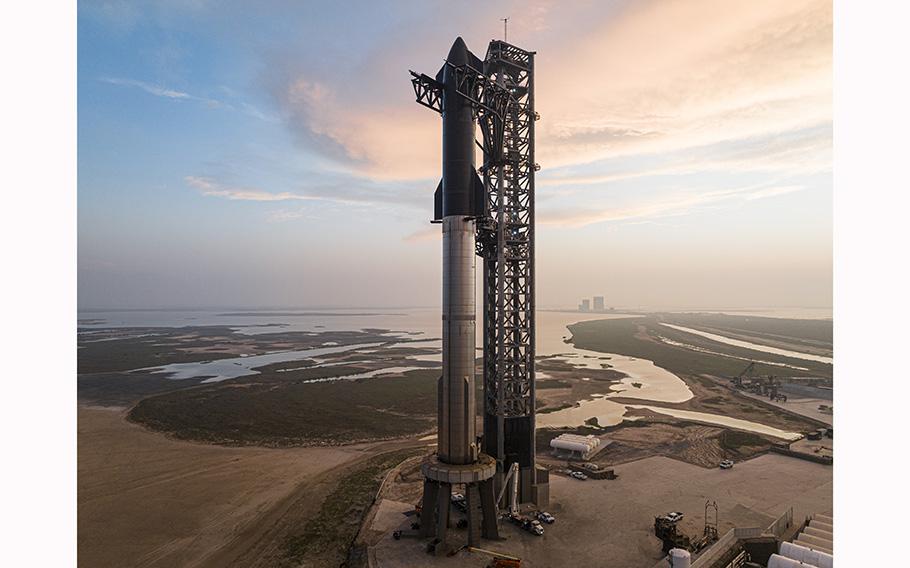
Starship test flight mission. (SpaceX/Flickr)
(Tribune News Service) — According to a senior NASA official, the agency's goal of returning astronauts to the moon for the first time in more than 50 years may be delayed yet again due to the Federal Aviation Administration's investigation into the midair explosion of a SpaceX Starship/Super Heavy on April 20.
An autonomous flight termination system (AFTS) aboard the two-stage Starship-Super Heavy triggered the explosion, about four minutes into the prototype's first orbital test flight, after the vehicle veered out of control after the two stages failed to separate. The mission called for Super Heavy to detach from Starship shortly after launch from Boca Chica and land in the Gulf of Mexico, while Starship was to have orbited once around the Earth before landing in the Navy's Pacific Missile Range Facility near Hawaii.
The incident automatically triggered an FAA investigation, and orbital flight tests from Boca Chica are on hold until the investigation is complete. NASA in 2021 awarded SpaceX a $2.9 billion contract to develop Starship as the human landing system (HLS) that will put U.S. astronauts back on the moon for the first time since the Apollo 17 mission in 1972 as part of the space agency's Artemis program. The first moon landing of astronauts under the Artemis III mission was to have taken place in December 2025.
However, as reported June 9 by SpacePolicyOnline.com, Jim Free, NASA's associate administrator for Exploration Systems Development, told a joint meeting of the Aeronautics and Space Engineering Board and the Space Studies Board of the U.S. National National Academies of Sciences, Engineering and Medicine that the Artemis III mission now isn't likely to happen before 2026.
That prediction is based on that fact that SpaceX has a lot of orbital flight testing to do before it can safely put astronauts aboard a Starship bound for the moon, though Starships are grounded pending the results of the FAA investigation, he said. Free said he's frequently asked whether NASA will meet its 2025 deadline and that his response is that SpaceX "need(s) to get flying before we can get any kind of assessment."
Since Starship, after launching, would have to refuel in orbit before heading to the moon, SpaceX has to demonstrate its ability to construct a fuel depot in orbit and transfer cryogenic (extremely cold) propellants in microgravity. SpaceX also has to successfully execute an uncrewed HLS moon landing before it's ready for the crewed Artemis III mission.
"They have a significant number of launches to go and that of course gives me concern about the December ... 2025 date," Free was quoted as saying.
He added that "our FAA partners" are critical to SpaceX being able to launch and complete its Starship missions.
"We have a firm, fixed-price contract with SpaceX," Free said. "Their job is to deliver that to us, and I'm going to hold them accountable to it."
The FAA is also being sued by a group of national and local environmental organizations for allegedly "failing to fully analyze and mitigate the environmental harms resulting from the SpaceX Starship/Super Heavy launch program at Boca Chica." SpaceX last month joined the FAA as a defendant in the suit.
The April 20 launch also resulted in the destruction of SpaceX's concrete orbital launch pad, dust and debris which were broadcast over a wide area by the intense thrust of the booster's engines.
SpaceX has begun pouring new concrete under the orbital launch mount at Boca Chica, and on June 25 conducted a multi-engine test fire of Starship SN25, successor to the one that blew up over the Gulf on April 20.
(c)2023 The Brownsville Herald (Brownsville, Texas)
Visit The Brownsville Herald
Distributed by Tribune Content Agency, LLC.